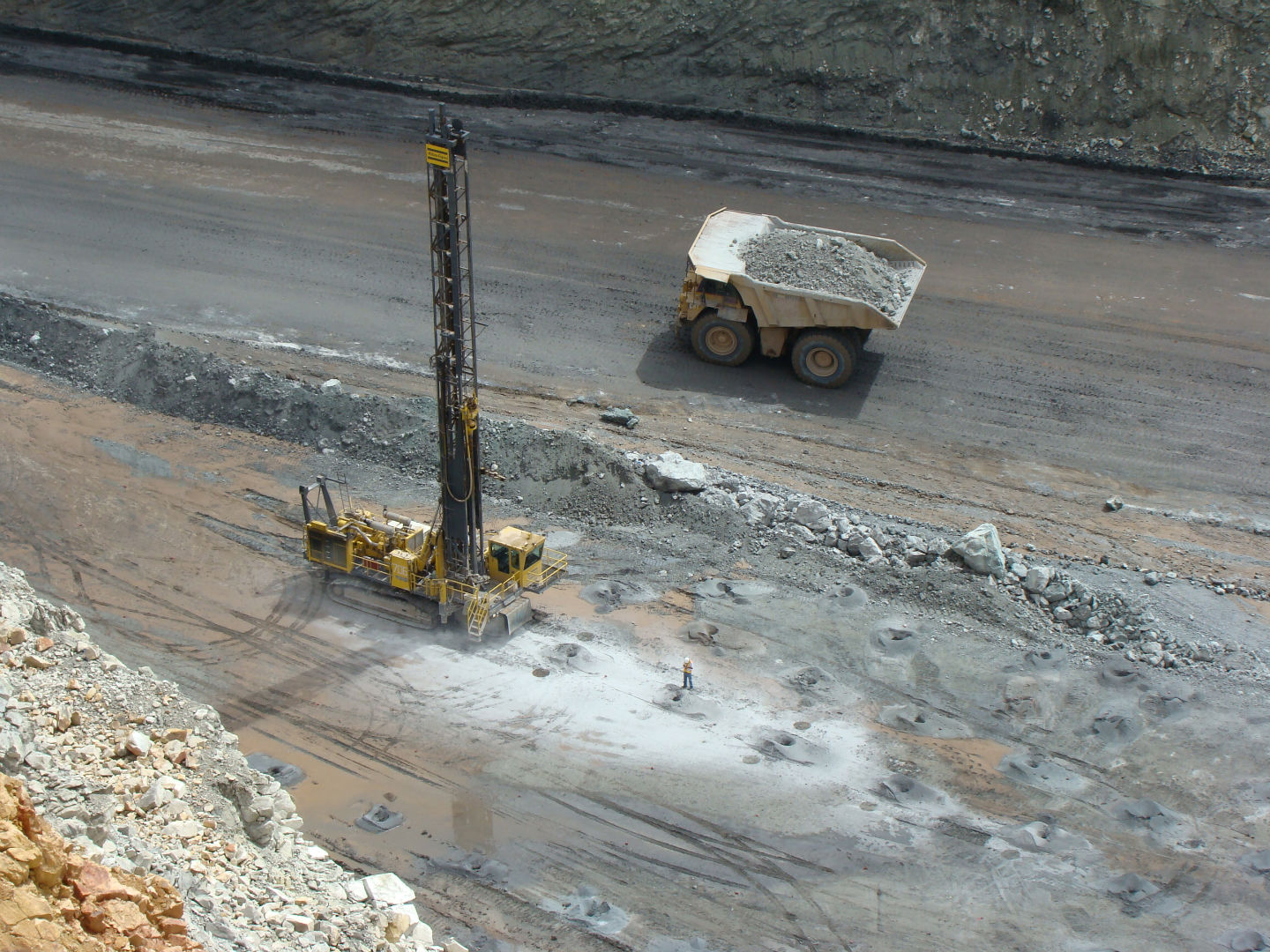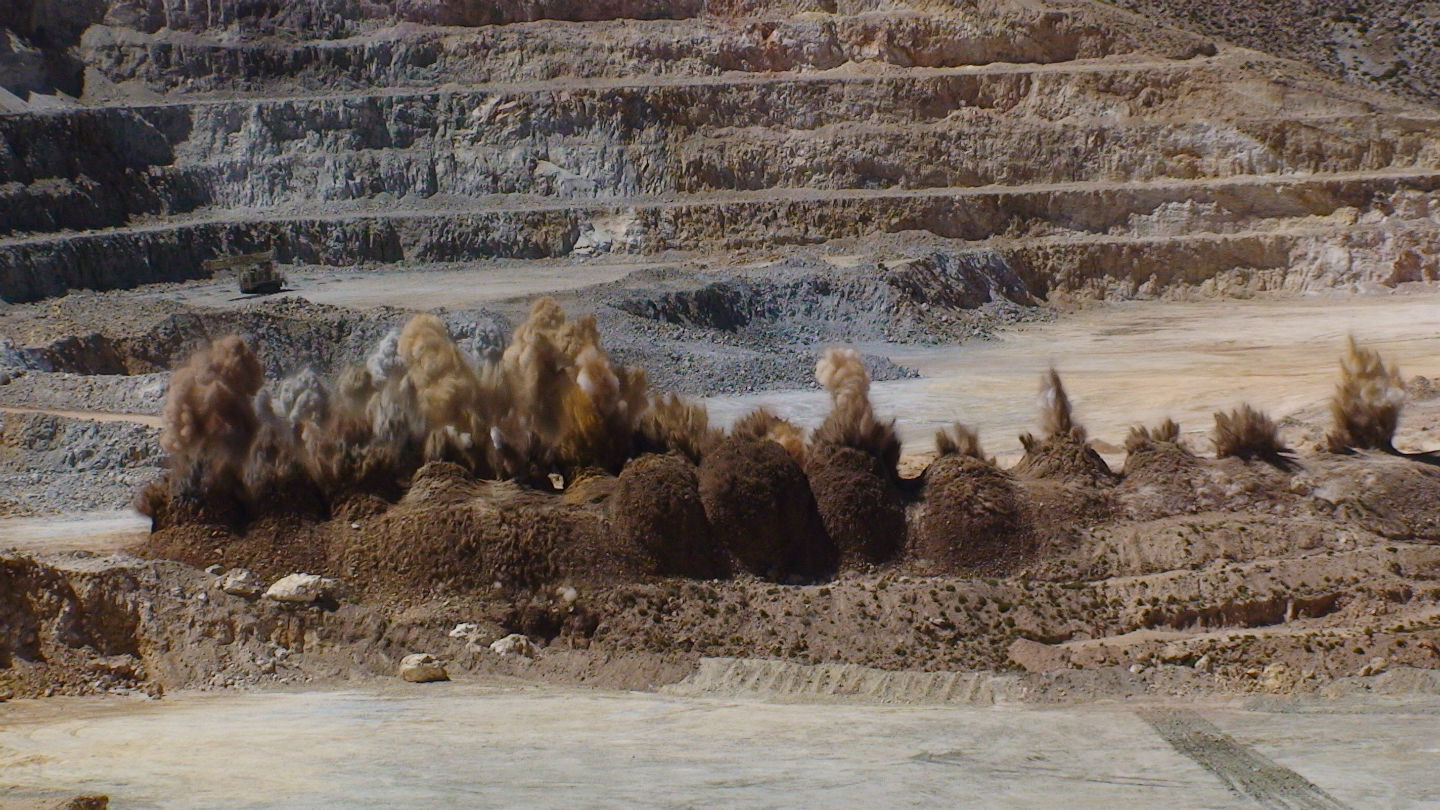Blast holes

The mining process begins with the drilling of “blast holes” that follow a reticulate of 7 to 10 meters, depending on the exact type of rock that should be extracted in each place.
The mining process begins with the drilling of “blast holes” in a grid of 7 by 10 meters, depending on the exact type of rock being extracted from a given location.
This activity is conducted using modern drilling equipment, capable of penetrating the rock and performing at speeds of approximately 1 meter per minute.
Throughout the drilling process, rock samples are taken for special chemical laboratory analysis to best determine the content of the elements and the grade of each element of economic interest (Ag, Zn and Pb). After completing this drilling phase, our geology department creates a sampling map of the entire area.
MSC uses a system of “silent blasts” to break off rocks in the target area of the open pit, which means a minimum of explosives is used to break the rock without propelling it over a long distance.
The explosives used in this procedure are known as ANFO, a mixture of ammonium nitrate and either diesel fuel or used oil. Blasts are generally performed at noon and follow a strict security protocol that involves isolating the area by closing access roads for a radius of 500 meters in all directions. After the blast, the explosion of all active charges is carefully verified to confirm that no non-blasted charges remain.
The explosives used for this procedure are known as ANFO, a mixture of ammonium nitrate and either diesel or used oil. The blasts generally take place at noon time and they are executed in compliance with a strict protocol of security that implies isolating the area by closing the access roads in a radius of 500 meters in all directions. After the blast, the explosion of all active charges is carefully verified to ascertain that there aren’t any non-blasted charges remaining.


